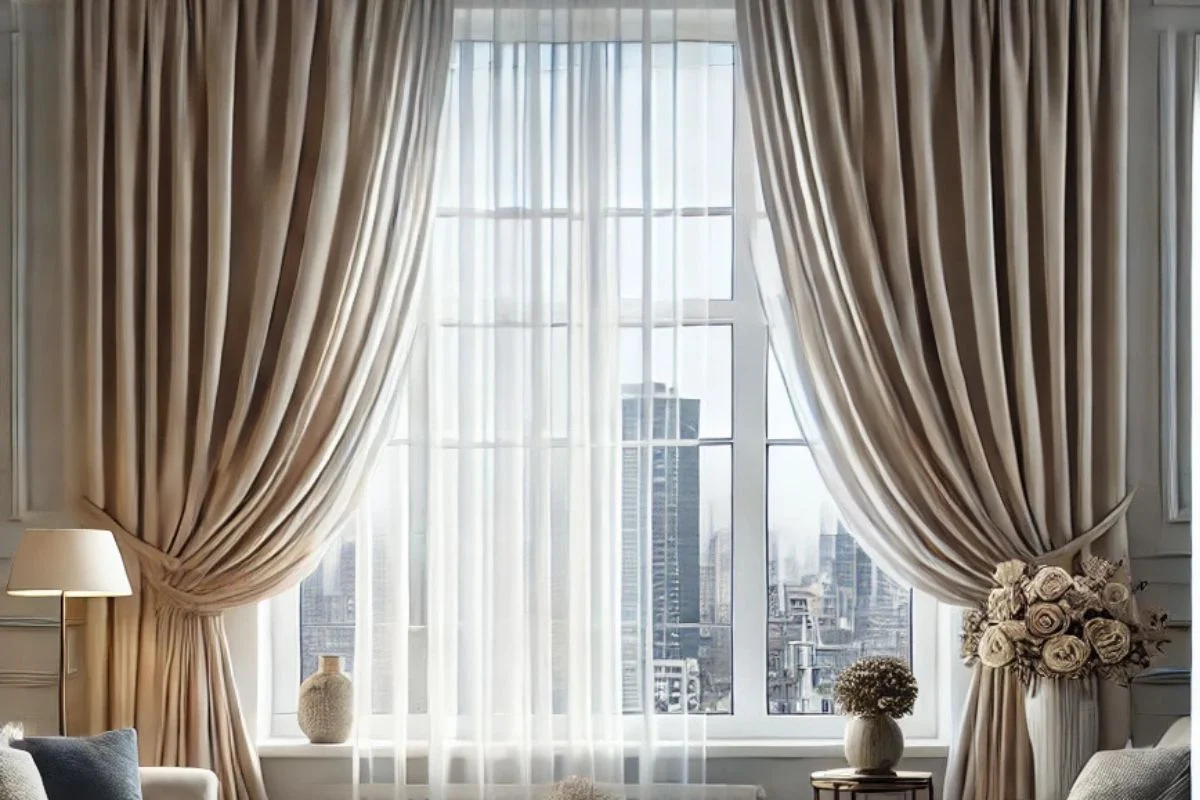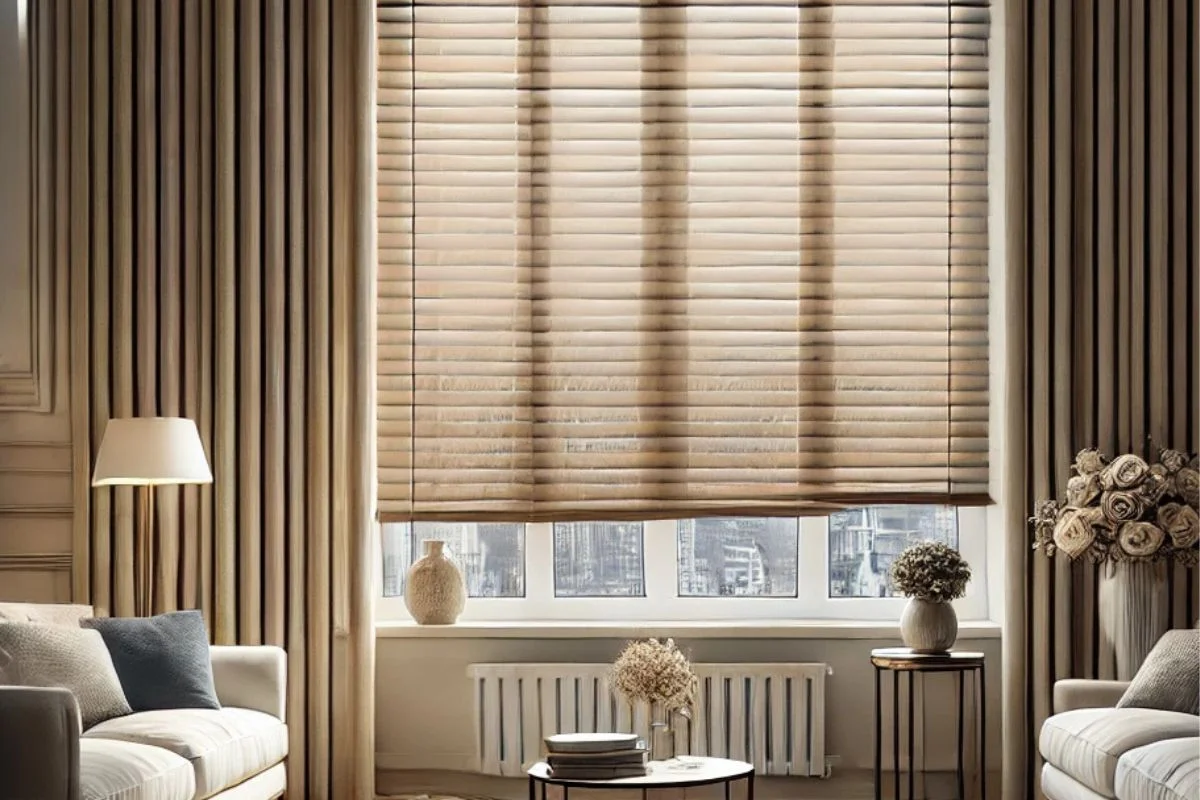When it comes to dressing up your windows, choosing between curtains and blinds can feel like a monumental decision. Both options bring their own style, functionality, and charm, but which one is the best fit for your home? While curtains can offer a touch of elegance and drama, blinds bring sleek, modern lines that many homeowners love. With so many options, materials, and styles available, the choice between curtains and blinds isn’t just about looks—it’s also about the light, privacy, and overall vibe you want for each room. In this guide, we’ll break down the pros, cons, and unique qualities of curtains and blinds to help you decide which window treatment will truly elevate your home’s style and meet your practical needs. Whether you’re aiming for cozy comfort or minimalist chic, let’s find the perfect match for your windows!
Window Dressing: Elevating Your Home’s Style with Curtains vs. Blinds
Curtains and blinds each bring unique aesthetic qualities to a space. Curtains come in endless fabric options, from sheer and light for a breezy look to thick velvet for a luxurious vibe. They create a soft, elegant atmosphere and suit traditional and eclectic decor. Blinds, on the other hand, offer a sleek, minimalist look with clean lines that fit well in contemporary or industrial interiors. Available in styles like Venetian, roller, and Roman, blinds complement structured, modern spaces. Whether your decor leans toward cozy or minimalist, there’s a window treatment that can seamlessly blend with your style.
Mastering Light and Privacy: Which Window Treatment Reigns Supreme
Choosing the right window treatment involves considering light control and privacy. Curtains, particularly blackout styles, offer full light-blocking capabilities, ideal for bedrooms or spaces where you want total darkness. Sheer curtains provide filtered light but limited privacy. Blinds offer greater flexibility, with adjustable slats that allow you to control the angle of light, making them ideal for living rooms or kitchens where you want natural light but privacy, too. With blinds, you can tilt the slats to customize light flow, while curtains provide either open or closed options, impacting how much light enters your space.
Maximizing Comfort: How Curtains and Blinds Boost Your Home’s Energy Efficiency
Both curtains and blinds can contribute to energy efficiency by insulating windows. Heavy curtains, such as blackout or thermal-lined curtains, help reduce heat loss in winter and keep rooms cool in summer by blocking direct sunlight. Blinds, especially cellular or honeycomb styles, trap air within their cells, acting as an insulating layer against heat and cold. These insulation benefits can reduce energy costs over time, particularly in climates with extreme temperatures. The best choice depends on the room’s purpose and climate, but both treatments offer options that help maintain a comfortable indoor temperature and lower utility bills.
Easy Upkeep or Long-Lasting Luxury? Navigating Maintenance and Durability
Maintenance and durability can influence the choice between curtains and blinds. Blinds, often made of wood, aluminum, or PVC, require minimal maintenance—usually just a regular dusting or a wipe with a damp cloth. Curtains need a bit more care; lighter fabrics may be machine-washable, but thicker, delicate fabrics might need dry cleaning, which can be a hassle. Curtains can also fade over time if exposed to sunlight, whereas blinds tend to maintain their look longer. If low maintenance is a priority, blinds might be the best choice, but curtains can offer a homier feel with proper care.
Tailoring Window Treatments: Choosing the Right Style for Every Room
Different rooms call for different window treatments. In the living room, curtains add warmth and comfort, making it feel inviting, while blinds offer a streamlined look suitable for modern spaces. Bedrooms benefit from blackout curtains for privacy and darkness, enhancing sleep quality, though blinds with room-darkening features are also effective. In bathrooms and kitchens, moisture-resistant blinds, such as faux wood or aluminum, are often more practical than curtains, which may retain moisture. By matching the window treatment to each room’s purpose and conditions, you can maximize comfort and functionality, enhancing each space’s unique requirements and aesthetic.
Budgeting Your View: Curtains vs. Blinds – Which Offers the Best Value for Your Money?
Cost varies between curtains and blinds, depending on materials, size, and customization. Curtains can be more budget-friendly, especially if you choose standard sizes and fabrics. However, high-end materials and custom lengths can drive up the price. Blinds, particularly motorized or custom-fitted ones, often require a higher initial investment but can be more durable over time. Installation costs are also a factor; while curtains are easy to install yourself, blinds might require professional fitting. Weighing both the initial cost and long-term durability of each option can help you choose a solution that fits both your budget and style.
Tailored to Perfection: Customization Options for Every Window
Customization is available for both curtains and blinds, allowing for tailored solutions that perfectly fit your space. With curtains, you can choose from custom lengths, colors, and patterns to match your decor and window size. Blinds also offer extensive options: made-to-measure blinds ensure a precise fit, and various slat materials allow you to match your decor. Motorized or smart blinds bring convenience and style, allowing you to control them remotely. Both options can be personalized to meet aesthetic and functional needs, offering the chance to truly make the window treatment your own unique addition to the room.
Green Your View: Eco-Friendly Window Treatments for a Sustainable Home
Eco-conscious homeowners can find sustainable options in both curtains and blinds. Curtains in organic cotton, linen, or recycled materials contribute to an eco-friendly choice. Some manufacturers offer curtains made from sustainably sourced fabrics, minimizing environmental impact. Blinds are available in materials like bamboo, which is renewable and biodegradable, or recycled materials for an eco-conscious choice. Cellular blinds, which improve insulation, can also reduce energy consumption, making them an environmentally-friendly option. Choosing eco-friendly treatments not only benefits the environment but also adds natural elements to your decor, creating a sustainable yet stylish home.
Adaptable Elegance: Embracing the Flexibility of Curtains and Blinds
Curtains tend to be easier to change out seasonally, making them ideal for homeowners who enjoy redecorating or adjusting their interiors to fit trends. You can easily switch between lighter, airy curtains for summer and heavier, cozy fabrics in winter. Blinds, however, are often more permanent fixtures and may require a higher initial investment, making them less ideal for frequent changes. For those who like variety, curtains provide flexibility, while blinds offer a long-lasting solution. Choosing curtains allows for frequent updates, while blinds deliver stability, giving you options based on your personal style preferences.
Final Recommendation: Blending Both for Style and Functionality
For the best of both worlds, consider layering curtains over blinds. Combining treatments lets you enjoy the style and softness of curtains with the light control and privacy of blinds. This approach works well in bedrooms or living areas, where you can use blinds to filter light during the day and close the curtains for added warmth or privacy at night. Layered window treatments offer versatility, allowing you to adjust the look and functionality based on time of day or your desired ambiance. Mixing curtains and blinds gives you enhanced control, making your windows a versatile design feature.
Conclusion
When it comes to choosing between curtains and blinds, the decision ultimately depends on your home’s style, functionality needs, and personal preferences. Curtains bring warmth, elegance, and a sense of softness, perfect for traditional or cozy spaces, while blinds offer a sleek, structured look with excellent light control, ideal for modern and minimalist rooms. Each option has its advantages, from energy efficiency to ease of maintenance, and both can be customized to fit your unique vision. Whether you opt for the changeability of curtains, the convenience of blinds, or a blend of both, your window treatment choice can transform each room, adding comfort, style, and practicality.




